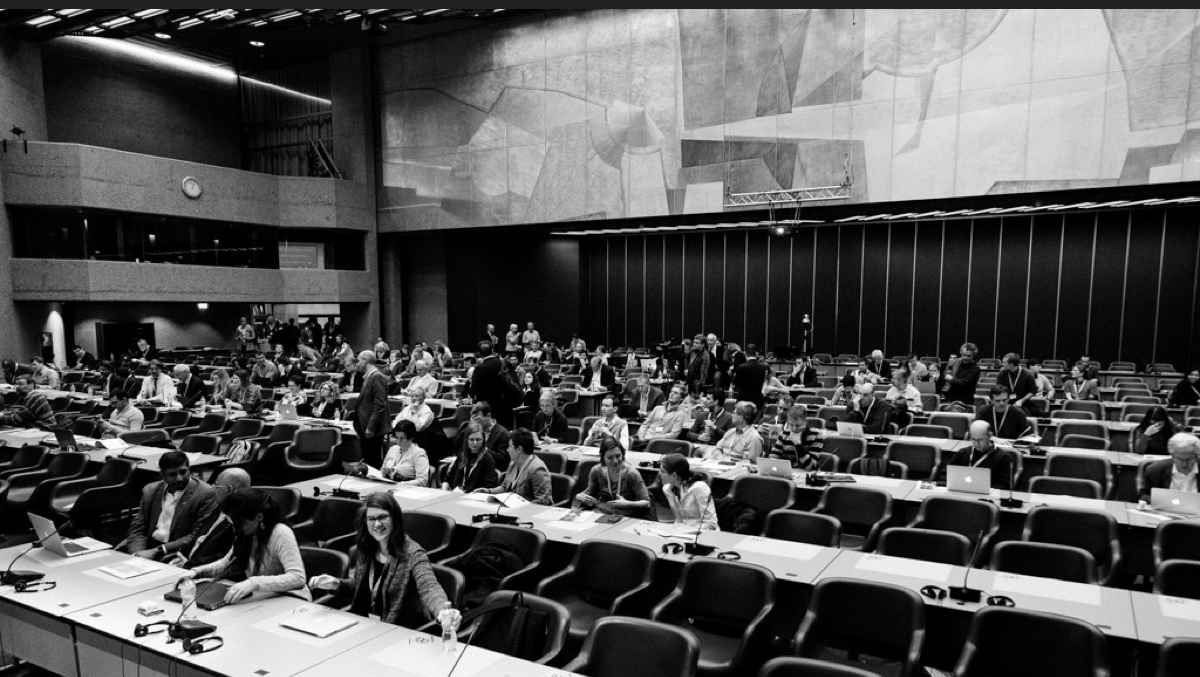ICTR-PHE 2016: An Overview

Along the five days of the ICTR-PHE 2016 Conference, a copious group of scientists coming from different research fields, spanning physics, engineering, radiobiology, and medicine, shared the results of their work and brought proposals for the future development of radiation oncology. Very hot topics were discussed between plenary sessions, parallel workshops, and poster presentations.
CERN people have had their share of stage, bringing important contributions to sessions dedicated to detectors and imaging, as well as discussing future projects for biomedical infrastructures.
The Medipix Collaboration is already well known in the field, since it has been active for the last 20 years and has now reached its third phase (and it is getting ready to launch the forth). The performance of the latest version of the two ASIC chips developed by the collaboration, Medipix and Timepix, were presented in a plenary session by Michael Campbell, from the CERN EP department. He highlighted the high potential for medical applications of these devices. Medipix3, composed of a matrix of 256x256 chips with a pitch of 55μm (or 110μm), is the most recent imaging chip designed by the collaboration. It permits spectroscopic X-ray imaging at high spatial resolution and at relatively high X-ray fluxes. In order to reduce the degradation of the energy resolution due to charge sharing between neighbouring pixels, a new charge summing and allocation scheme has been implemented, so that in each event the total deposited energy of one hit is allocated to one pixel only (the pixel that recorded the largest charge). The other chip is Timepix3, which is designed to send continuously as much information as possible off chip for data processing. It is able to tag hits with a very precise time stamp (of the order of 1.6ns), so that it is a perfect candidate for applications in beam and dose monitoring during hadron therapy.

The collaboration between Medipix and ARDENT (Advanced Radiation Dosimetry European Network Training Marie Curie ITN project) lead to the design of the GEMPIX Detector, presented by Fabrizio Murtas, from CERN and INFN (Italy), in the oral poster presentation session on detectors and imaging. This detector is based on a triple GEM (Gas Electron Multiplier) chamber read out by CMOS Timepix chips. The GEMPIX was tested at CNAO in Pavia, where it was inserted in a water phantom and used to get a precise measurements of energy deposition inside the phantom during a session of hadrontherapy. In particular, it was tested with a beam of 120 MeV protons and one of 330 MeV/u Carbon ions. The energy deposition was measured at different positions in depth, allowing a 3D reconstruction of the beam inside the phantom. The experimental data also proved to be in good agreement with a detailed simulation done with GEANT4. The possible application of the GEMPIX detector to beam diagnostic in micro-beam proton therapy was also discussed.
Gianluca Stringhini, from the CERN EP department, presented a novel high resolution module for PET scanners developed within the group lead by Paul Lecoq at CERN, in collaboration with the University of Milano-Bicocca (Italy) and the Portuguese Laboratory of Instrumentation and Particle Physics. Their research focused on the development of a scintillator module that can reach high performance in terms of spatial resolution (less than 1.5 mm), without raising too much the cost and the complexity of the system. The module is based on a 64 LYSO (Lutetium-yttrium oxyorthosilicate) crystals matrix and on a multi pixel photon counter. The information collected can be analysed in order to identify the crystal in which the scintillation event takes place, and to reconstruct the depth of interaction of the γ-ray along the vertical length of the crystal.
The MEDICIS-PROMED project, coordinated by CERN, has also been presented by John Prior, from the CHUV Hospital of Lausanne, and Johanna Pitters, one of the 15 young researchers recruited within this programme. Radioactive ion beams produced at the CERN’s ISOLDE facility (and the newly constructed CERN-MEDICIS facility) will be used to produce specific ions to synthetize innovative radiopharmaceuticals or to perform hadron therapy treatments. The focus is particularly oriented on ovarian cancer, which is difficult to treat with external radiotherapy. New types of treatments are under investigation, in particular theranostics appear to be promising: it consists in the use of isotopes which emit a positron or a primary photon that can be employed for imaging, along with Auger electrons, beta and alpha particles that have a therapeutic effect. In this project high-technology companies and leading academic research institutes are involved, as well as hospitals in the Geneva area, which can exploit short-lived isotopes produced in the CERN-MEDICIS facility.
A panel discussion was also dedicated to another CERN related project, OPENMED, which aims at establishing an open-access facility for biomedical research based on the existing Low Energy Ion Ring (LEIR) at CERN. Ghislain Roy, from CERN, explained that there is a strong need for a biomedical facility able to provide particle beams of different types and energies to external users, for radiobiology and detector development. Currently these studies are carried out in nuclear physics laboratories and ion beam therapy centres (out of treatment hours and in some spare lines dedicated to research), but there is a lack of beam-time, in particular for ions with energy of more than 50MeV/n. The characteristics of beam energy, size and availability of LEIR make it an ideal candidate for conversion to such a biomedical test-bed facility.
Some other contributions from CERN researchers were hosted in the poster session, on topics such as: Monte Carlo simulations for dosimetry and imaging, development of tools for treatment planning, and evaluation of dose in PET studies.

You can get a glimpse of the conference in pictures here: https://www.flickr.com/photos/salvafiore/sets/72157664618988926/
